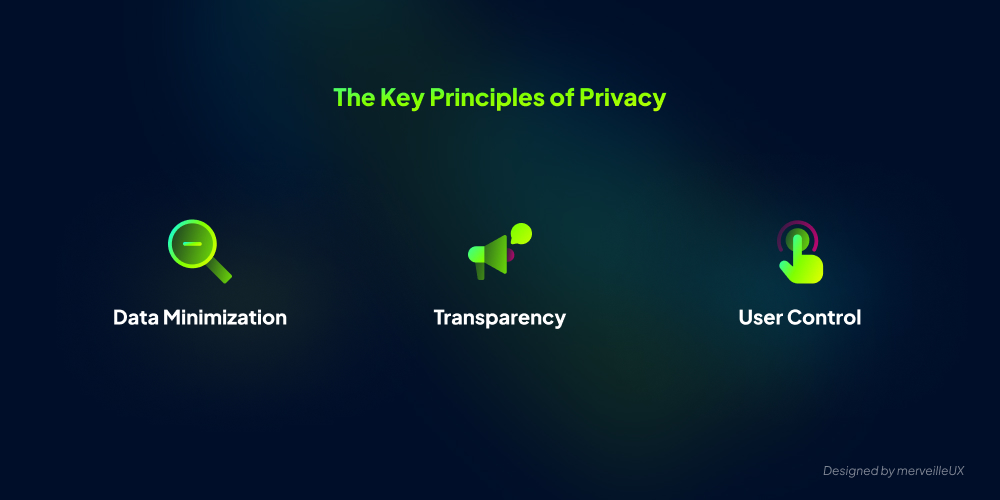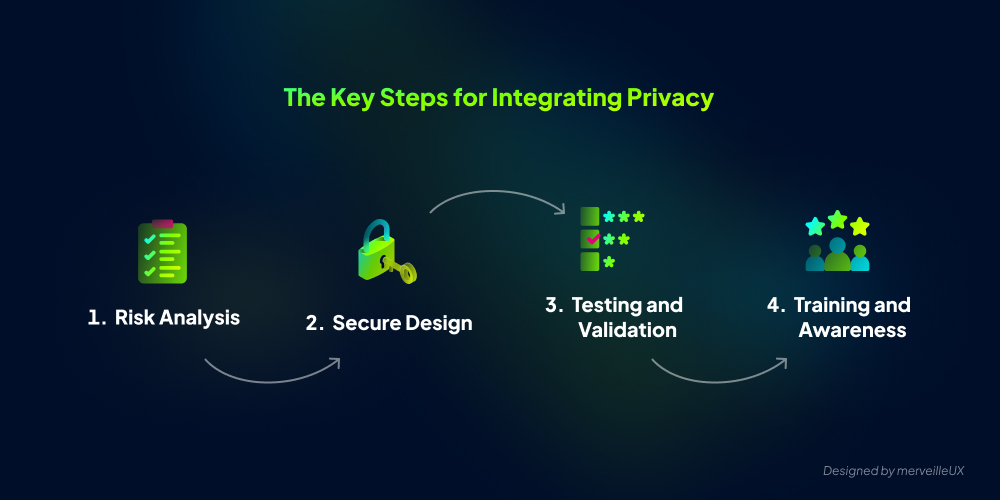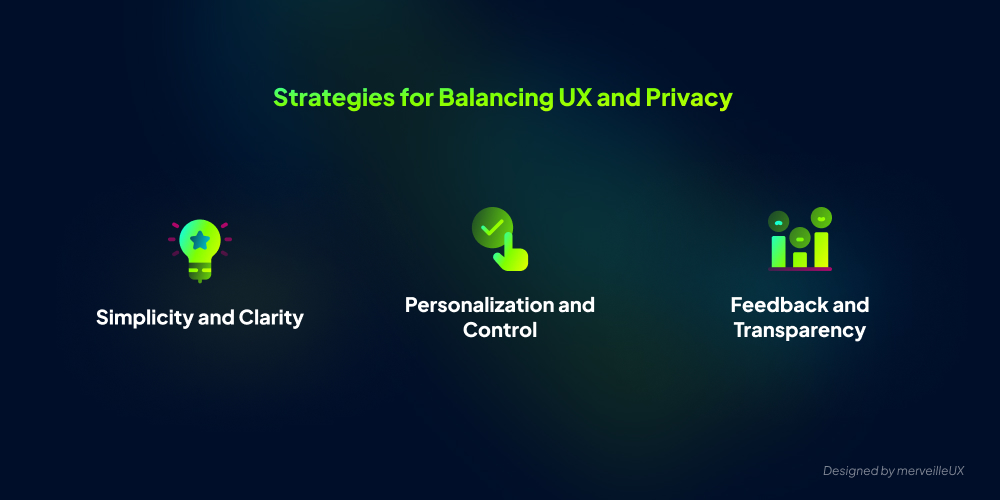In today's data-driven landscape, privacy is more than just a consideration—it's a strategic imperative. For SaaS companies, the challenge is to deliver a seamless and secure user experience while navigating the increasing demands for data protection. How can you balance these priorities without compromising either? By integrating privacy principles into your product design from the start, you can align with user expectations and regulatory requirements. Whether you're a decision-maker or a designer, explore how to make privacy a strategic advantage for your business.
Table of contents
What is Privacy-Centered Design?
Also known as "Privacy by Design," privacy-centered design is an approach that involves integrating data protection measures right from the start of product or service development. Rather than treating privacy as an afterthought, it becomes a fundamental pillar of development. This method aims to minimize data breach risks and strengthen user trust.
For SaaS companies, adopting a privacy-centered approach isn't just about regulatory compliance; it's also a way to stand out in an increasingly competitive market by designing ethically. Users are more aware than ever of the importance of protecting their personal information. By placing privacy at the heart of your design strategy, you show your clients that you take their security seriously.
Key Principles
To effectively implement privacy within your SaaS, it's crucial to understand and apply certain fundamental principles. These principles guide the design and development of products that respect user privacy. Here are the three key principles: data minimization, transparency, and user control.

Data Minimization
The principle of data minimization involves collecting and processing only the information strictly necessary for your product or service. By limiting the amount of data collected, you reduce the risk of privacy breaches and simplify data management. This involves regularly reviewing the types of data collected and removing any that are no longer useful.
Transparency
Transparency is essential for building trust with your users. It involves clearly informing them about the data collected, how it is used, and with whom it may be shared. This can be achieved through accessible and understandable privacy policies, as well as contextual notifications within the application.
User Control
Giving users control over their data is a crucial aspect of privacy-centered design. This includes the ability to view, correct, and delete their personal information. By providing clear options for managing privacy preferences, you enhance their sense of security and control.
Integrating Privacy into Design
Integrating privacy from the outset is a proactive approach that helps prevent data protection issues rather than fixing them later.
Privacy by Design
The concept of "Privacy by Design" is based on the idea that privacy should be integrated from the beginning of the development cycle. This means every design and development decision should consider privacy implications. By adopting this approach, you can identify and mitigate potential risks before they become costly issues.
Key Steps for Integration
-
Risk Analysis: Start with a thorough analysis of privacy-related risks. Identify data collection points and assess potential threats.
-
Secure Design: Integrate security measures such as data encryption, robust authentication, and access controls from the design phase.
-
Testing and Validation: Conduct regular tests to ensure privacy measures are effective. This includes penetration testing and security audits.
-
Training and Awareness: Ensure all stakeholders, from designers to developers, understand the importance of privacy and how to integrate it into their work.
Real-World Example
Consider a SaaS company developing a project management platform. By integrating privacy from the start, they could:
- Minimize Data Collection: Only gather necessary information for the platform's operation, such as usernames and email addresses, avoiding unnecessary sensitive data.
- Provide Privacy Options: Allow users to choose which notifications they receive and control the visibility of their personal information.
- Transparency: Provide a clear and accessible privacy policy explaining how data is used and protected.
By following these steps, you can create products that not only respect user privacy but are also safer and more reliable.

Balancing Perfect UX with Total Privacy
Balancing the protection of privacy with creating a smooth and enjoyable user experience (UX) is a challenge. However, there are strategies to achieve this.
Simplicity and Clarity
The key to integrating privacy without compromising UX is to maintain simplicity and clarity in your interfaces. Users should be able to easily understand how their data is used and how they can manage it. Use simple language and clear visuals to explain privacy settings.
Personalization and Control
Offer users personalization options to manage their privacy preferences. For example, allow them to choose what data they want to share and with whom. By giving users full control over their information, you enhance their trust and engagement with your product.
Feedback and Transparency
Provide immediate feedback when users change their privacy settings. For example, show them a summary of the changes they made and explain how it will affect their experience. Transparency in these interactions builds user trust and engagement.
Best Practices Examples
Contextual Notifications: Use contextual notifications to inform users when data is collected or used. This can be done via pop-ups or discreet banners.
Privacy Dashboards: Create a dashboard or dedicated section where users can view and manage all their privacy preferences in one place.
User Testing: Conduct user testing to ensure privacy features are understandable and easy to use.

Regulations to Know
In today's digital landscape, SaaS companies must comply with various data protection regulations.
GDPR (General Data Protection Regulation)
GDPR is a European regulation aimed at strengthening the protection of personal data for EU residents. It imposes strict obligations regarding data collection, processing, and storage. To comply with GDPR, companies must:
- Obtain explicit consent from users before collecting their data.
- Allow users to access and delete their personal data.
- Notify authorities of data breaches within 72 hours.
CCPA (California Consumer Privacy Act)
CCPA is a California law that provides similar protections to GDPR. It grants consumers the right to know what data is collected, to opt out of data sales, and to request the deletion of their personal information. To comply with CCPA, companies must:
- Provide clear information about the data collected and its use.
- Offer an opt-out option for data sales on their website.
- Respond to consumer requests regarding data access and deletion.
How Design Can Aid Compliance
Design plays a crucial role in complying with data protection regulations. Here are some strategies:
- Intuitive Interfaces: Design interfaces that allow users to easily understand and manage their privacy preferences.
- Notifications and Consent: Use clear notifications to obtain user consent and inform them of their rights.
- Documentation and Audits: Maintain detailed documentation of data protection measures and conduct regular audits to ensure compliance.
Conclusion
Designing privacy-respectful SaaS products is a challenge, but it's also an opportunity to stand out and gain user trust. By integrating privacy principles from the start, balancing security and user experience, and complying with regulations, you can create products that not only protect user data but are also more robust and reliable.
At merveilleUX, we believe that privacy and user experience can go hand in hand. We're here to support you in this journey, offering services in prototyping, auditing, design systems, and gamification, all while upholding our values of empathy, accessibility, freedom, tolerance, and adaptability.
If you'd like to learn more about how we can help you design privacy-respectful SaaS products, feel free to contact us.



